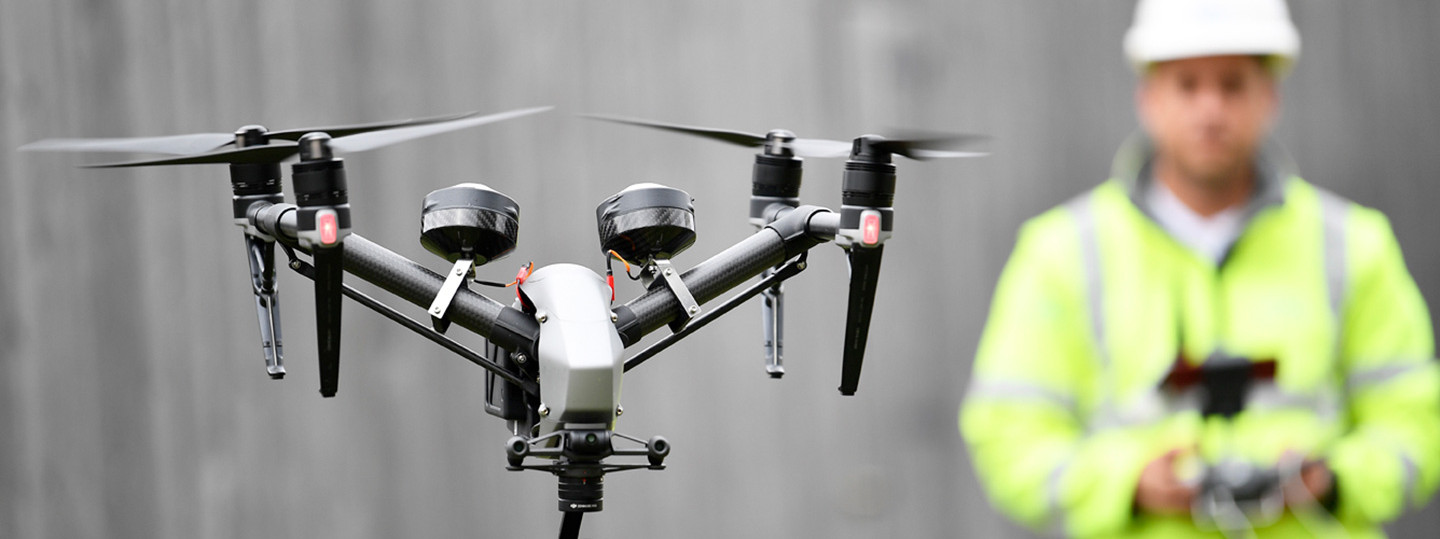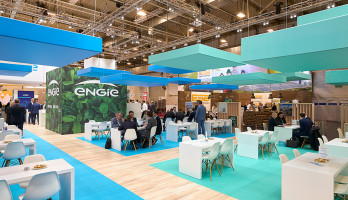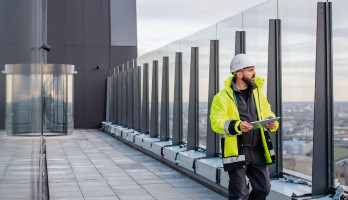
Facility management: Smart drones for more efficiency and lower costs
In recent years, drone technology has developed rapidly. The remote- or software-controlled flight robots are not only used as toys for the general public, but are also increasingly used in the industrial sector.
Stefan Schwan, Head of Facility Services at ENGIE Germany, sees the drones as one of the key technologies of the coming years to optimize numerous technical and infrastructure facility management services. With their cameras, modern devices are not only suitable for precise recordings, but can capture, record and monitor a whole series of further data thanks to built-in sensors. "This opens up completely new applications with drones for facility management in the future," says Schwan.
The popularity of drones is growing in the commercial sector
Whether it is roofers, real estate agents or farmers – in many commercial and industrial sectors, the use of drone technology is becoming increasingly attractive. The aircraft use their intelligent technology to measure buildings and landscapes, check the condition of wind turbines, energy lines or bridges. They can also provide fire support as eyes from above or provide valuable information for efficient field fertilization.
Especially in workplaces exposed to extreme weather conditions and high risks, drones offer a safe and cost-effective solution in the areas of surveillance and documentation. The small helpers from the air are also playing an increasingly important role in property marketing. High-resolution 360-degree images and object videos provide significant added value for site analysis and help buyers make their investment decisions.
Building management trends: Drones taking off
For facility management, Digitalization means fundamental change. Artificial intelligence (AI) is already being used in many areas of technical building management. Drones offer tremendous potential in this field of application. Due to their versatility and ease of use, they allow a fast, precise mapping of land or the inspection of roofs and other difficult-to-access parts of buildings.
The possibilities of utilization for facility management companies are also particularly exciting in the field of thermography testing, which can be carried out with the aid of drones in the exterior and interior of buildings. When inspecting facades or checking cooling and ventilation systems, smart aircraft can be used to accurately identify weaknesses and damage, which can then be repaired. The thermal drone images thus make a significant contribution to energy optimization and cost savings in the building sector.
Facility management: How drones help optimize the life cycle of buildings
With the surveying and visualization of real estate and building data, drones have numerous interfaces, especially in the building information modeling (BIM). It is precisely in the digital mapping of the life cycle of a construction project that the flying robots can show their strengths. "For example, during the planning and construction of a building, the drones can support the exact documentation, monitoring and construction of 2D and 3D reconstructions of the current state of a building site," explains Stefan Schwan. "In addition, they are suitable for the inspection and documentation of the entire building during the operating phase. Even areas that are difficult to access, such as facades, chimneys, roofs and photovoltaic systems, can be detected without any problems," says Schwan.
For example, the "Drones and Robots" department of the ENGIE Lab CRIGEN research and service center is working on a comprehensive and user-friendly drone technology for this field. Your advantage: "The application can provide all project-relevant data in the highest precision throughout the entire life cycle of a building and can therefore be optimally used at many interfaces in every BIM phase – from planning, construction and management to renovation and demolition," Schwan explains.
Drone technology: Smart integration into computer-aided facility management
The automation of surveillance operations by autonomous operating drones and their integration into existing CAFM systems (Computer-Aided Facility Management) enables the development of further potential, with which various processes in technical building management can be made more efficient and the management costs can be significantly reduced.
Networked with such a smart data platform, routinely used drones can independently detect problems and report them to the system, so that the necessary maintenance and repair operations are commissioned. In conjunction with other data sources of building automation, the flying robots support predictive maintenance, which can, for example, prevent expensive plant failures.
Conclusion: Future of facility management – drones as a key technology
For the user in facility management, the application of drones will bring numerous advantages in the near future. They collect data systematically, efficiently and with maximum precision, even in a complex environment. "Overall, both safety and reliability are significantly increased compared to alternative options. At the same time, personnel and material costs are significantly reduced," Schwan summarizes. "As a result, drones can make an essential contribution to increasing planning accuracy and cost security in management, increasing building efficiency and fully exploiting value-added potential. This results in real added value for facility management in buildings of all types and sizes," says Schwan.
Our Expert










